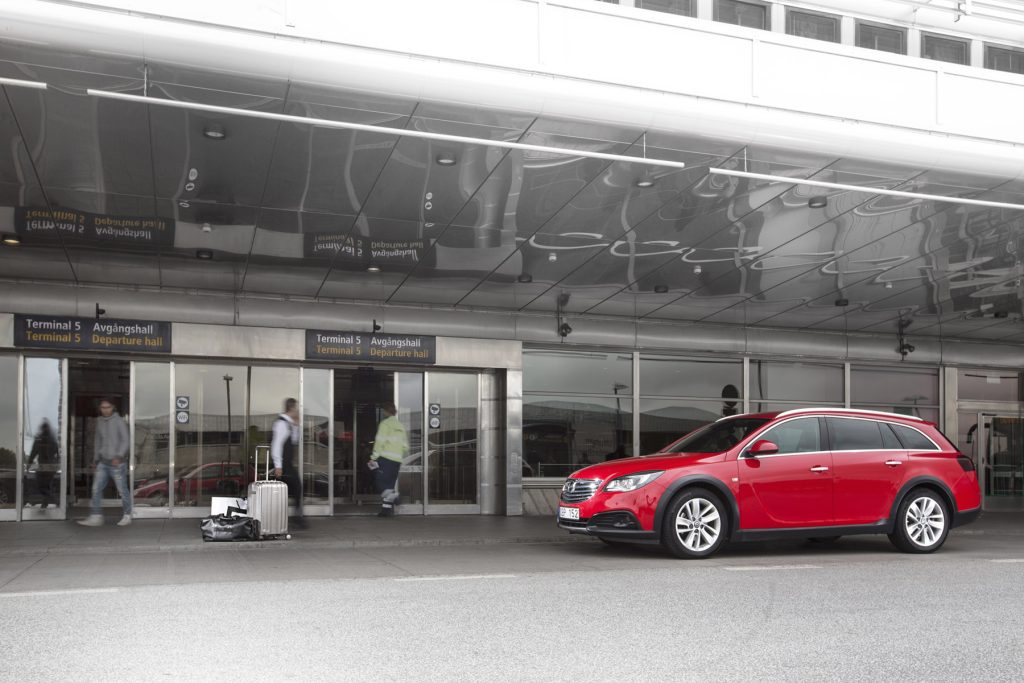
The article was originally produced on June 24, 2014, some facts and prices may have changed since then.
Opel Insignia
Opel follows the trend and boots its car-of-the-year-winning model, the Insignia, with an off-road package and four-wheel drive to go a little further when the road gets rough.
That this type of cross-over model exists began when Audi saw a camouflaged BMW model that later became the X5. What Audi saw was a raised 5-Series, prompting them to quickly develop the A6 Allroad. BMW themselves never came up with a model of this kind, which, on the other hand, a number of other brands did, including Volvo with the XC70, which was a great success as well as the A6 Allroad.
In 2009, the Opel Insignia was awarded the Car of the Year award. Since then, the car has received a facelift and now also an off-road package. Actually, it might not be quite right to call it "off-road", but the package contains higher ground clearance, four-wheel drive, hasp plates and plastic skid plates. The trend for this type of car model is incredibly big up here in northern Europe. Almost every major car company has a cross country in its stable. The ingenuity with how to name these models is also very good as no company uses the same name. As previously mentioned, Audi calls its Allroad, Volvo its XC, Volkswagen calls its Passat model Alltrack and Subaru its Outback and the list could be made longer. Opel's choice of the aforementioned, Country Tourer, however, feels very close to the reality of what type of car model this actually is. A car to do landscape tours with.

The four-wheel drive is not unique to the Country Tourer, but is also available in the standard version of the Insignia. The system comes from Swedish Haldex. With an electronically controlled differential brake, power can be distributed between the left and right rear wheels. Another system can adjust torque between 0 to 100 percent for the front and rear axles. Normally, the Insignia Country Tourer is front-wheel drive. To power the entire package, there are three different engine options. The smallest engines have been skipped in favor of slightly more powerful machines. The strongest is a petrol engine with 250 horsepower and 400 newton meters of torque. Unfortunately, this engine will not be delivered in Sweden. We have to make do with two diesel engines, the strongest of which is a twin-turbocharged 2-liter machine with 195 horsepower. The test specimen was equipped with the slightly frugal diesel engine of 163 horses. This engine is powered by a turbocharger and is a bit sluggish, but is sufficient in all everyday situations on Swedish roads. The positive thing about the smaller diesel engine is the consumption, which comes down to a mere 5.6 liters more miles for mixed driving. Very good for a four wheel drive car with right ground clearance! Power is transmitted via either a six-speed automatic transmission or, as in the test car, a manual transmission. For those who want to avoid sitting and whipping the gear lever in dreary queuing traffic, the automatic transmission is recommended.

Since the facelift, the number of buttons in the dashboard has decreased slightly. However, this has gone to a bit of an exaggeration with the touchpad that sits behind the gear lever and that controls the infotainment system. It is not completely easy to maneuver but surely just a matter of habit. The appearance, on the other hand, is very tasteful and with a high quality feeling in the choice of materials and the way everything fits together. Instead of traditional gauges, there is now a large screen in front of the steering wheel that shows all the necessary information. When switching between normal and sport mode, the color behind the gauges changes from white to red. For 15,000 kroner, you get fitted leather sports seats instead of the standard seats, which supposedly have a lot of adjustment options. The standard seats are in no way uncomfortable, but the sports seats can be worth their price in the long run for those who drive a lot and want to sit optimally. Leather seats are also easier to keep clean in all situations.
To start the Insignia Country Tourer, simply press the start button behind the steering wheel. The car is equipped with a keyless system, which is convenient when locking and opening the car. It is noticeable that Opel worked hard to make the Country Tourer as snug as possible. You can barely hear the engine once it's warm. Tire noise is minimal even on our Swedish roads. Thanks to this, the journey becomes very comfortable and the miles are covered on a conveyor belt in the Insignia Country Tourer.

Opel's status in Sweden has for many years struggled against headwinds. This despite a series of very nice models and, as I said, a car of the year win with the Insignia model in particular. In contrast to how many Passats were newly registered last year, the figure was 1159 cars for Volkswagen versus 82 for Opel. Around the rest of Europe, even Opel ranks higher than Volvo. What Opel's low status is due to is hard to say, but perhaps more people should give the brand from Rüsselsheim an honest chance. The Opel Insignia Country Tourer is clearly a worthy competitor to the other forest mules that crowd our roads.
Opel Insignia Country Tourer
| Basic price | From SEK 320,900 |
| Engine | 2-liter diesel four, 163 hp. Torque 350 Nm |
| Transmission | Front engine, 6-speed automatic, four-wheel drive |
| Acceleration | 0-100 in 11.4 sec |
| Top speed | 200 km/h |
| Fuel consumption mixed driving according to the manufacturer | 0.64 l/mile |
| Weight | 1,768 kg |
| Guarantees | 3 years new car, wagon damage 3 years, 12 years rust |
| Web | www.opel.se |




